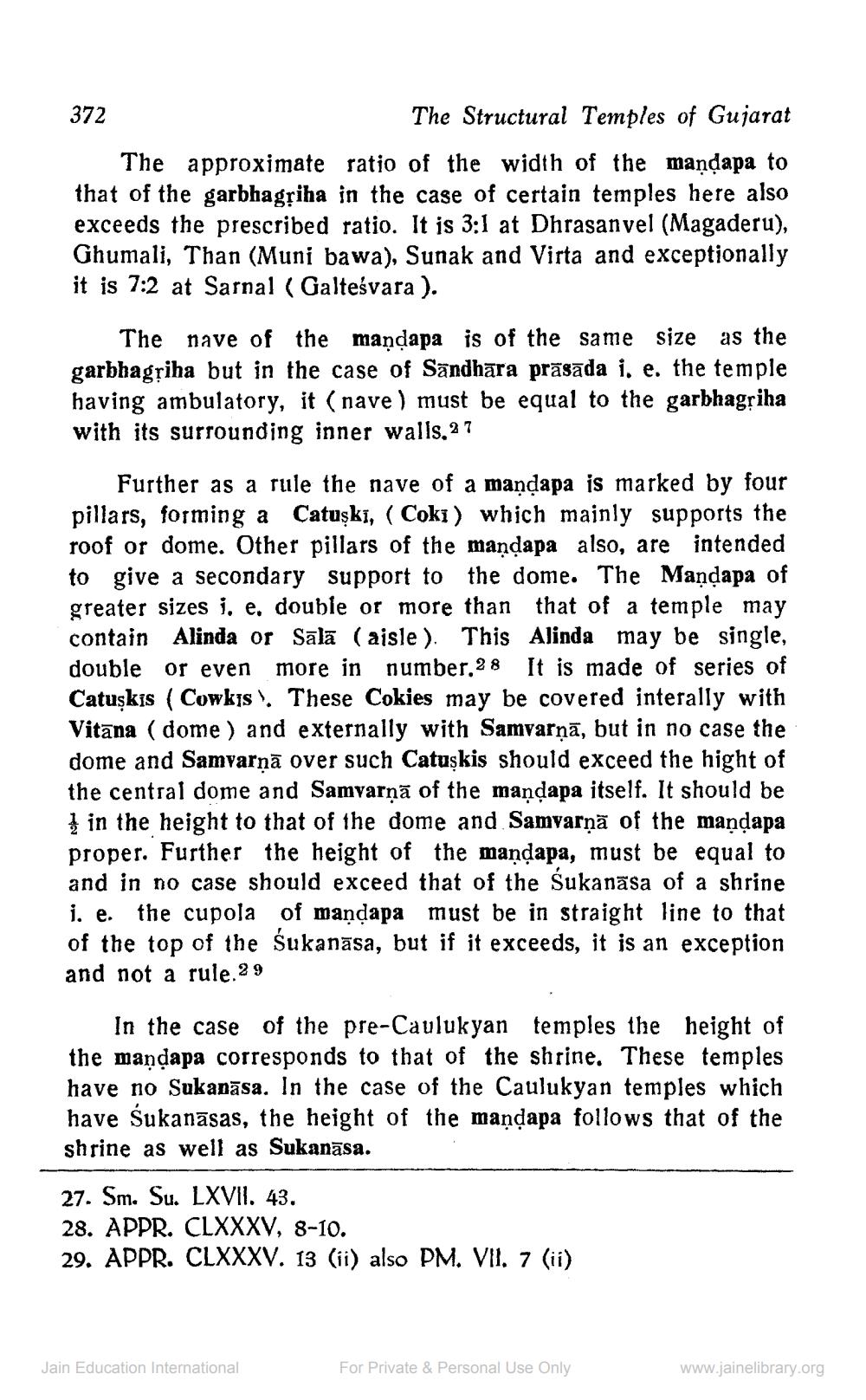________________
372
The Structural Temples of Gujarat The approximate ratio of the width of the mandapa to that of the garbhagriha in the case of certain temples here also exceeds the prescribed ratio. It is 3:1 at Dhrasanvel (Magaderu), Ghumali, Than (Muni bawa), Sunak and Virta and exceptionally it is 7:2 at Sarnal (Galteśvara ).
The nave of the mandapa is of the same size as the garbhagriha but in the case of Sandhāra prāsāda i. e. the temple having ambulatory, it (nave) must be equal to the garbhagriha with its surrounding inner walls, 27
Further as a rule the nave of a maņdapa is marked by four pillars, forming a Catuşki, ( Coki) which mainly supports the roof or dome. Other pillars of the maņdapa also, are intended to give a secondary support to the dome. The Mandapa of greater sizes i, e, double or more than that of a temple may contain Alinda or Sālā (aisle). This Alinda may be single, double or even more in number.28 It is made of series of Catuskis (Cowkjs. These Cokies may be covered interally with Vitāna (dome ) and externally with Samvarṇā, but in no case the dome and Samvarṇā over such Catuskis should exceed the hight of the central dome and Samvarņā of the maņdapa itself. It should be
in the height to that of the dome and Samvarņā of the mandapa proper. Further the height of the mandapa, must be equal to and in no case should exceed that of the Sukanāsa of a shrine i. e. the cupola of mandapa must be in straight line to that of the top of the Sukanāsa, but if it exceeds, it is an exception and not a rule.29
In the case of the pre-Caulukyan temples the height of the manqapa corresponds to that of the shrine. These temples have no Sukanāsa. In the case of the Caulukyan temples which have Sukanāsas, the height of the maņdapa follows that of the shrine as well as Sukanāsa.
27. Sm. Su. LXVII. 43. 28. APPR. CLXXXV, 8-10. 29. APPR. CLXXXV. 13 (ii) also PM. VII. 7 (ii)
Jain Education International
For Private & Personal Use Only
www.jainelibrary.org




